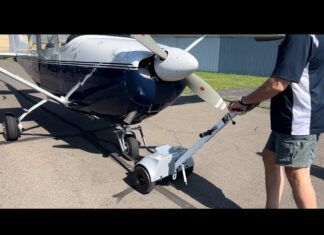The unthinkable has just happened—you’ve damaged an airplane. The good news is that the airplane has stopped and you are conscious and able to move. Here’s a checklist for what to do next:
• Shut off the fuel, master switch and mags.
• Get everyone out of the airplane and move away from it. While post-crash fires are common only in movies, there is always a risk. Unless you have a severely injured passenger who, in your best judgment, shouldn’t be moved, get everyone clear of the aircraft.
• Attend to the injured. If you can make a cellphone (or radio) call for emergency services, do it and get them on their way; otherwise, start first aid.
• Take a deep breath and assess the situation. If you are in the wilderness, start thinking about survival, signaling and rescue.
• Secure the aircraft. Protect it from further damage. Resist having it moved by well-meaning individuals until you’ve spoken to your insurance agent.
• If you have time, take pictures of the scene with your cellphone.
•Call your insurance agent and aviation attorney.
• If people start arriving, limit your conversation to taking care of your passengers and securing the airplane. If someone starts questioning you about the event beyond those two topics, politely, but assertively, decline to discuss it then and there and get contact information for that person. You do not and should not discuss what happened with authorities until you have had time to collect yourself and find out the extent of your injuries—that’s usually at least 24 hours. Think PTSD—you have damaged an airplane, a big-time traumatic event for a pilot.
• NTSB regulations require immediate notification of an accident. However, you can’t notify until you know that what has just happened meets the NTSB definition of accident. If you determine that the extent of the damage or injuries meet the definition, then notify the NTSB—not the FAA.
• As soon as you can, get yourself and your passengers to a safe, secure location where you can sort out what to do next with a minimum of interference and do what your insurance agent and aviation attorney recommend.

